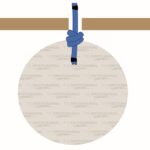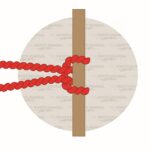A barrel hitch knot ties around barrels and other containers, usually with an open top. The containers sit upright, and the rope ties under, over, and around the container. Barrel hitches are secure and safe as long as they are tied correctly.
Barrel hitches are most common when loading cargo onto a ship. Still, others can use them for transporting barrels and other containers anywhere.
Three knots like the barrel hitch include:
- The barrel sling
- The cow hitch
- The girth hitch
Follow the simple directions below to learn how to tie a barrel hitch.
What Is A Barrel Hitch?
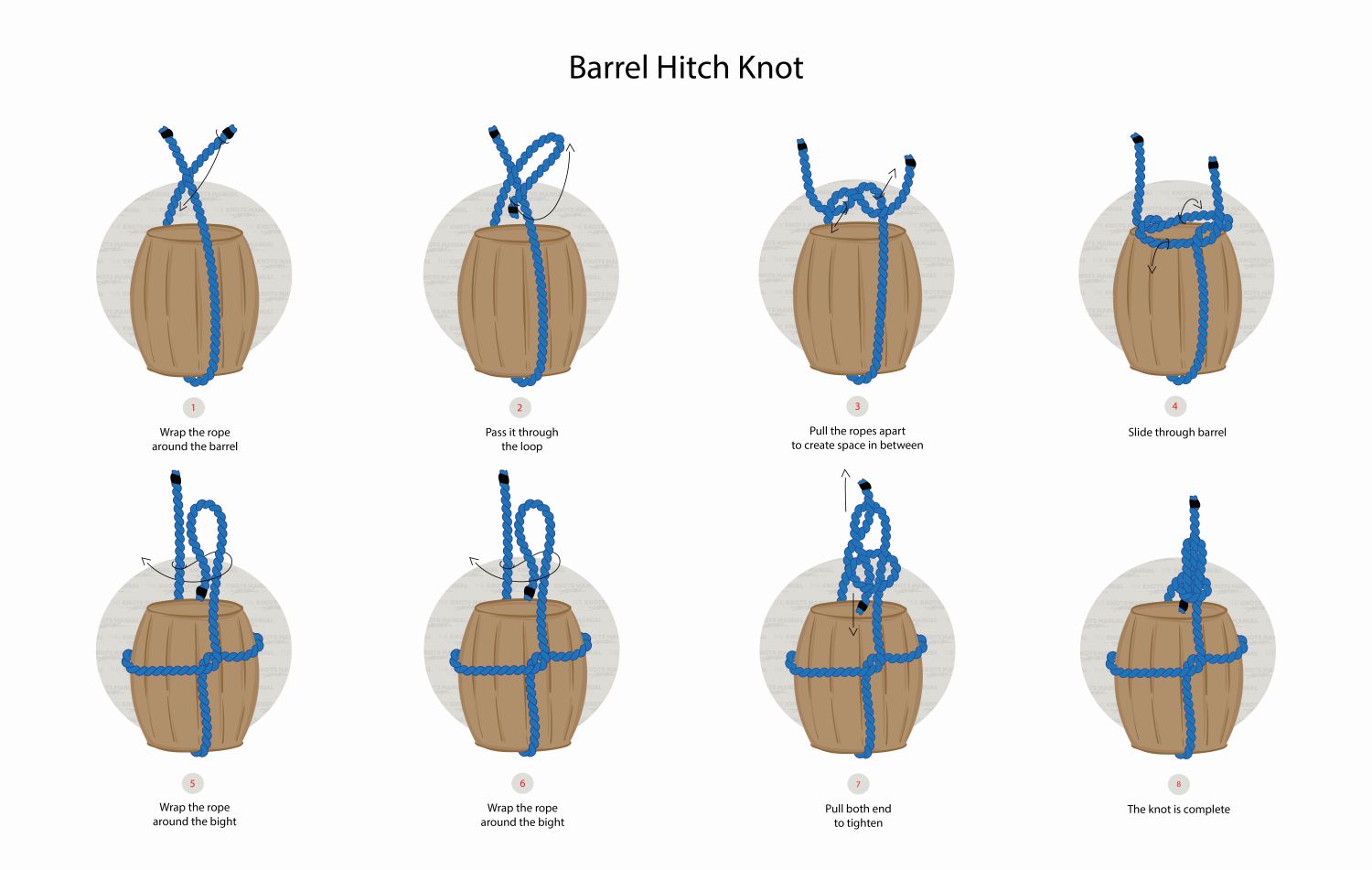
Barrel knots tie around barrels, buckets, and other containers. The knots help to lift and move containers securely. The knots tie around an upright barrel that is often open. Barrel hitches allow barrels filled with liquids to be moved easily. They all but eliminate the risk of spilling when constructed properly.
The barrel hitch was first described in The Ashley Book of Knots, although Ashley didn’t give the knot a name. The book describes two ways to tie a knot around a barrel in an upright fashion.
Barrel hitch knots are reasonably secure when tied around the barrel correctly. Still, users must take proper care to prevent the rope from slipping.
These knots keep a barrel secure, even with swinging motion. Still, users should avoid strong jerking movements. Jerky movements are often enough to dislodge the barrel from the sling. The barrels will crash to the ground, creating an unnecessary, dangerous situation.
How To Tie A Barrel Knot
* Note that these are directions for tying a rope around a physical barrel for easy transport. *
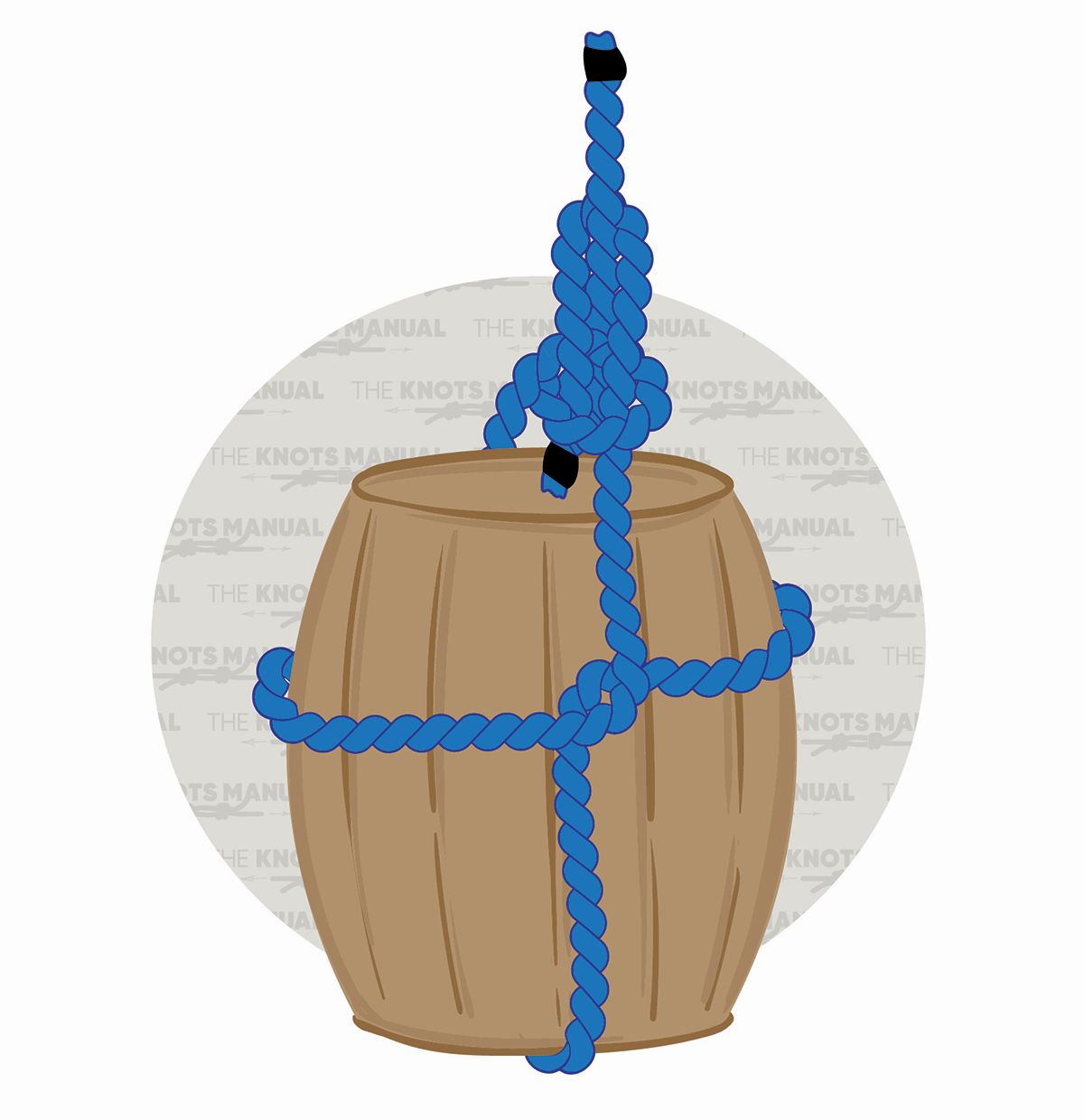
Tying a barrel hitch doesn’t have to be challenging; just follow these eight steps:
Step 1:
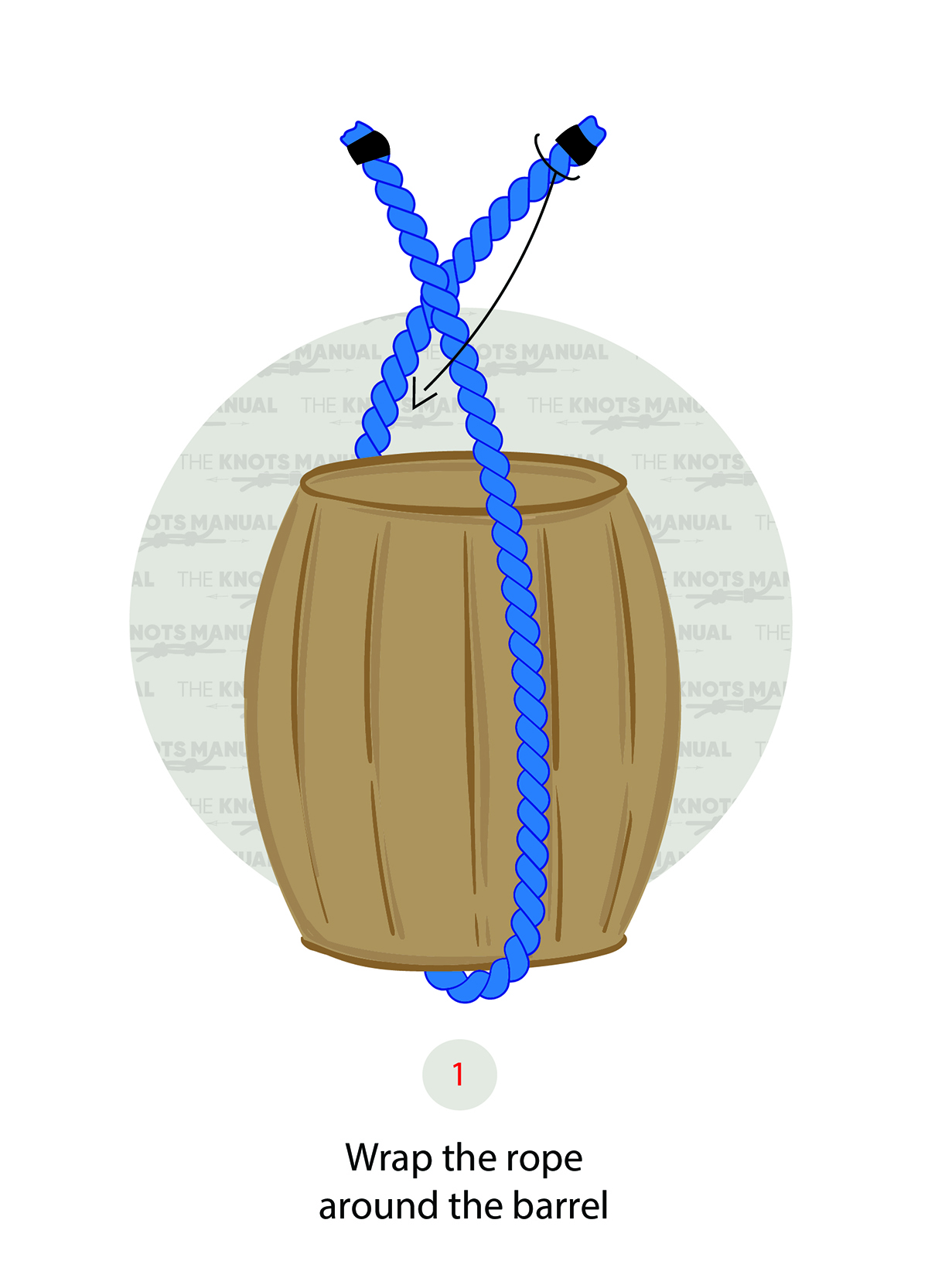
Wrap the rope around the barrel lengthwise, creating a loop above the barrel. The rope should be equal, so the standing and working end meet at the same height above the barrel. The standing part of the rope should sit underneath the barrel.
* Users must take proper care to ensure the rope is centered underneath the barrel. A rope sitting too close to either side of the barrel’s edges is dangerous and likely to slip.*
Step 2:
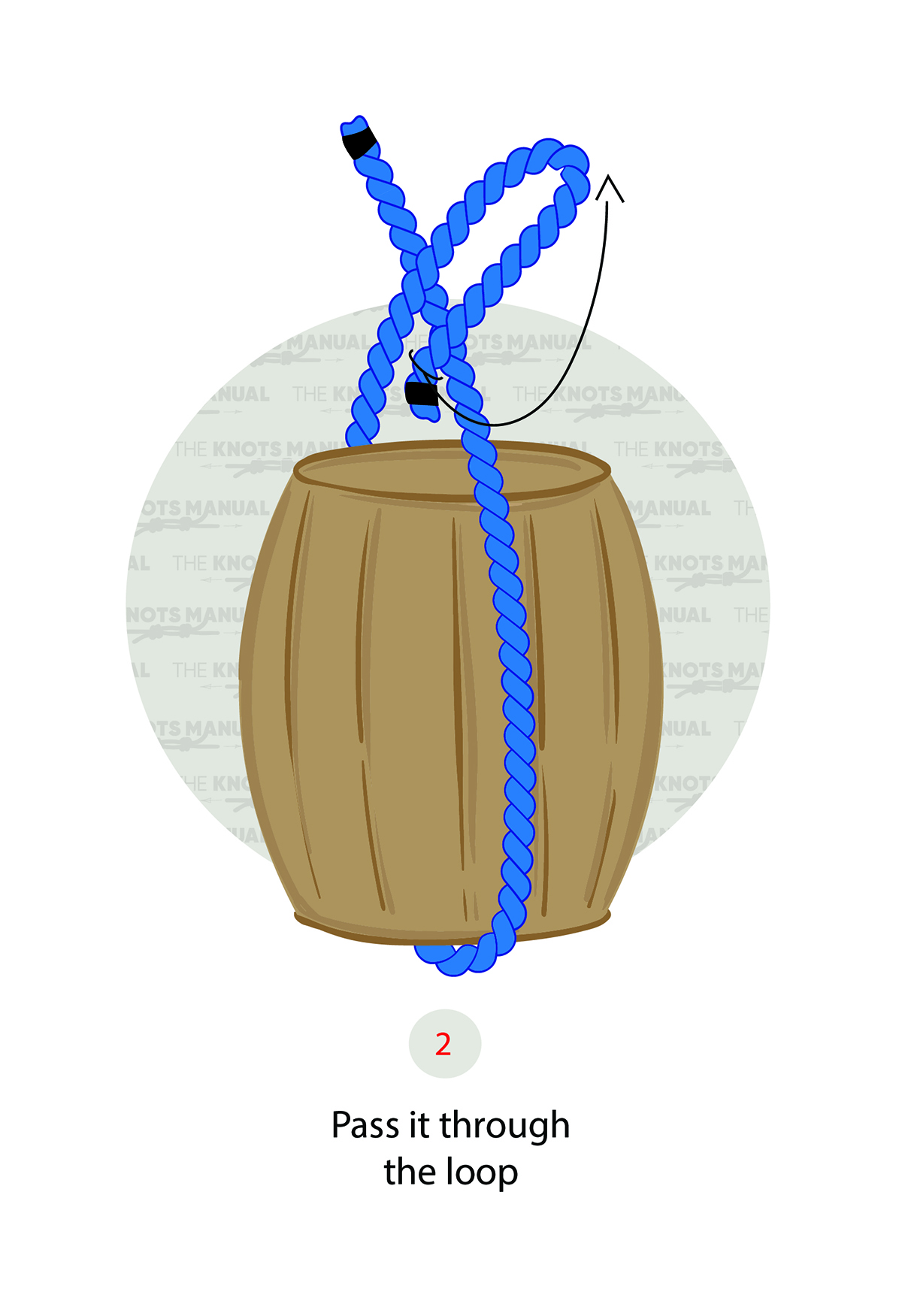
Pass the rope’s working end through the loop just created. An overhand knot was just created, and a large loop has formed above the barrel.
Step 3:
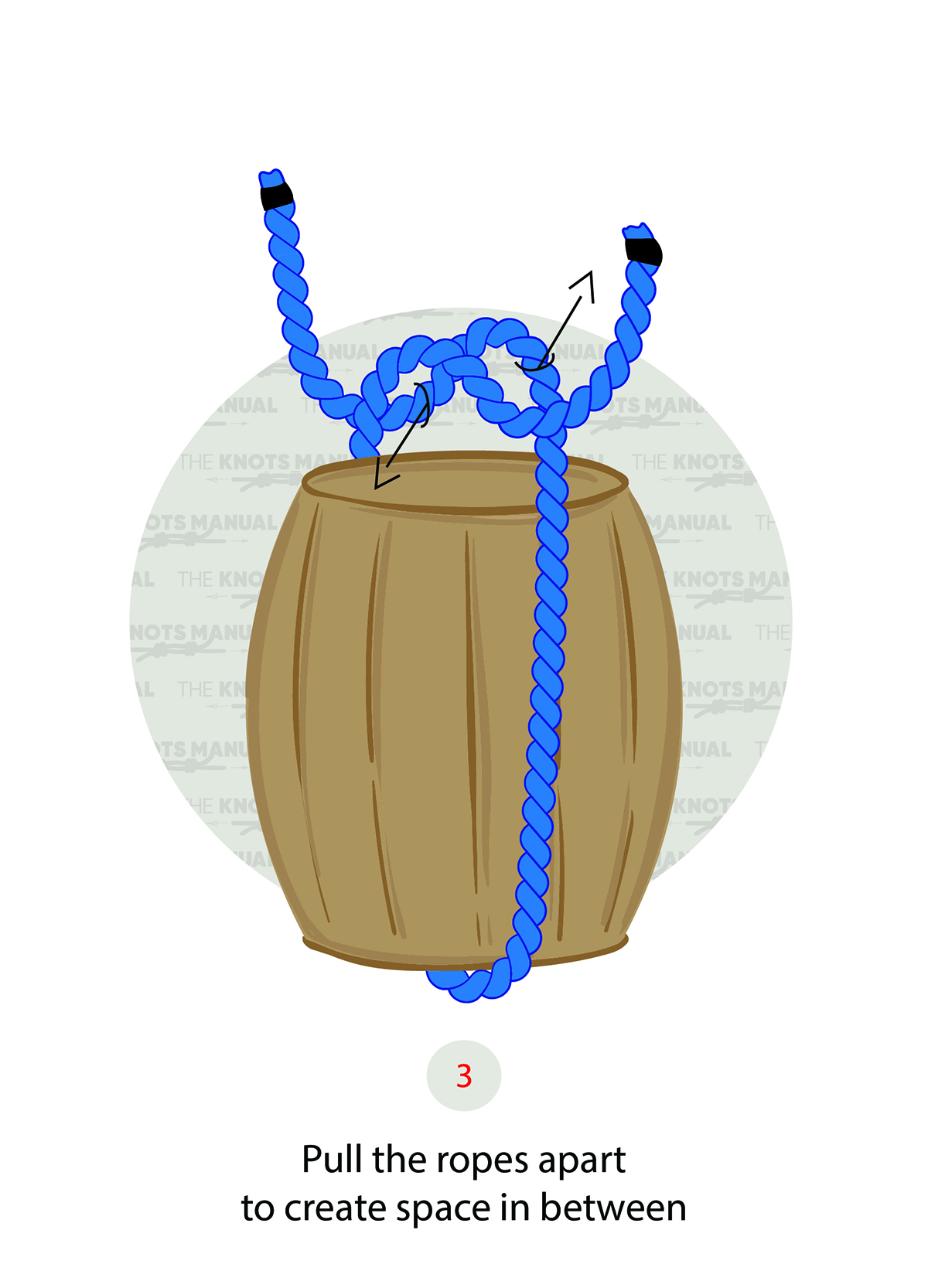
Pull the ropes forming the loop apart, creating a larger loop that can fit around the width of the barrel.
Step 4:
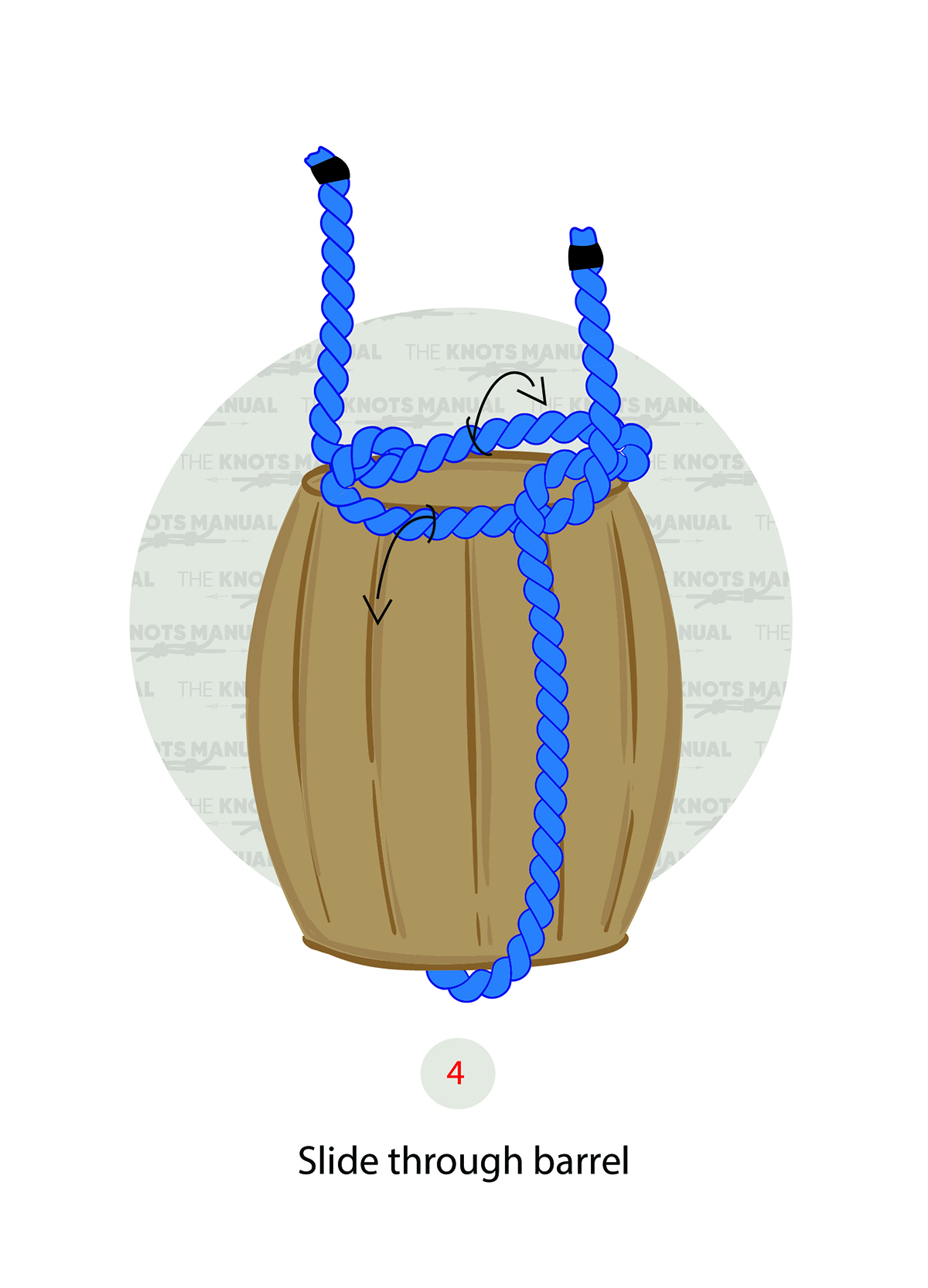
Pull the loop down over the sides of the barrel.
* To keep the knot safe, the loop must be situated correctly on the barrel. The loop must sit far enough above the center of gravity to prevent the barrel from tipping over. At the same time, the loop needs to be far enough down the barrel that it can’t slip off. *
Step 5:
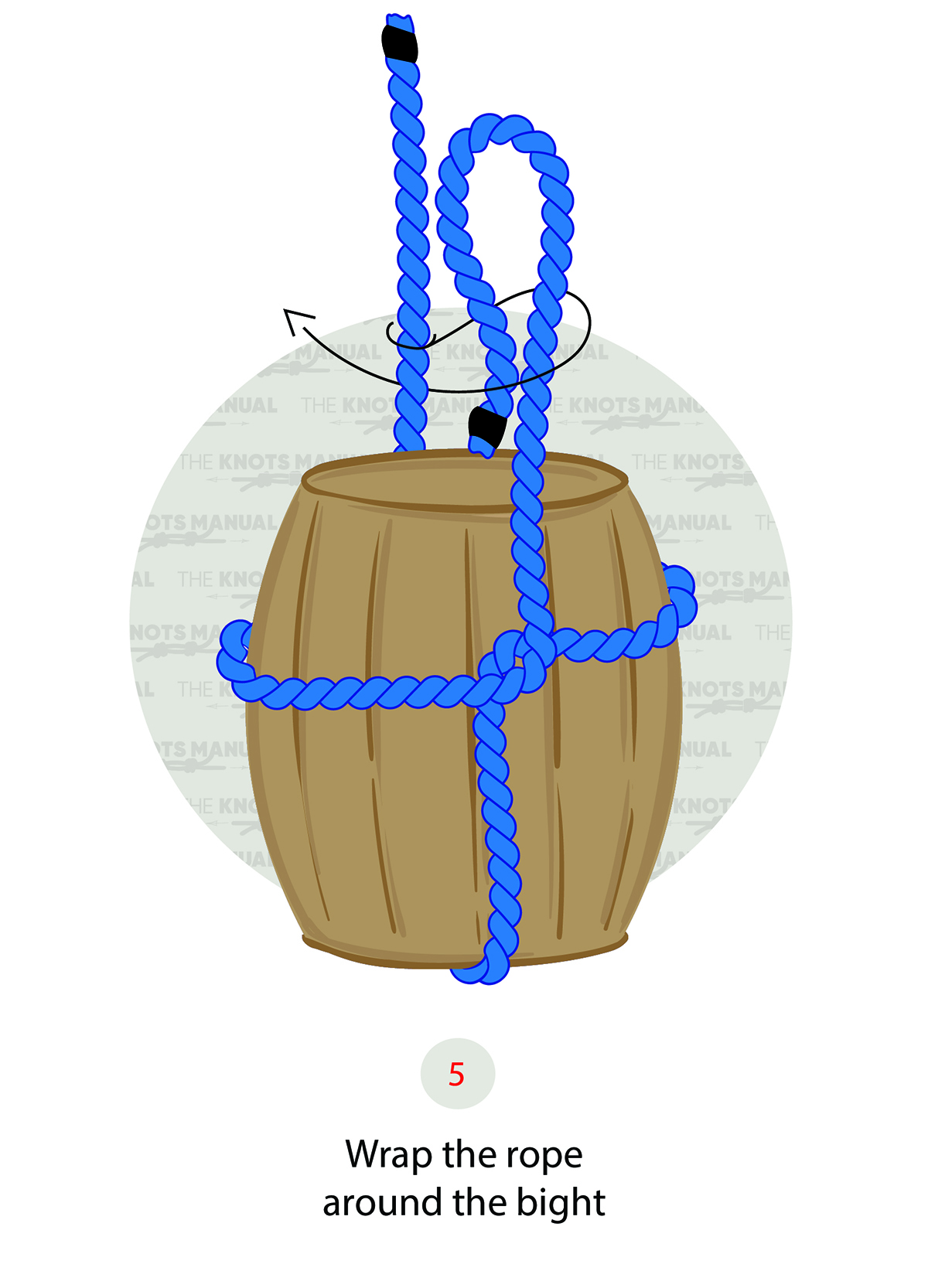
Form a bight in the standing end of the rope. Then, wrap the working end around the bight.
* Steps five through seven are creating a bowline knot. *
Step 6:
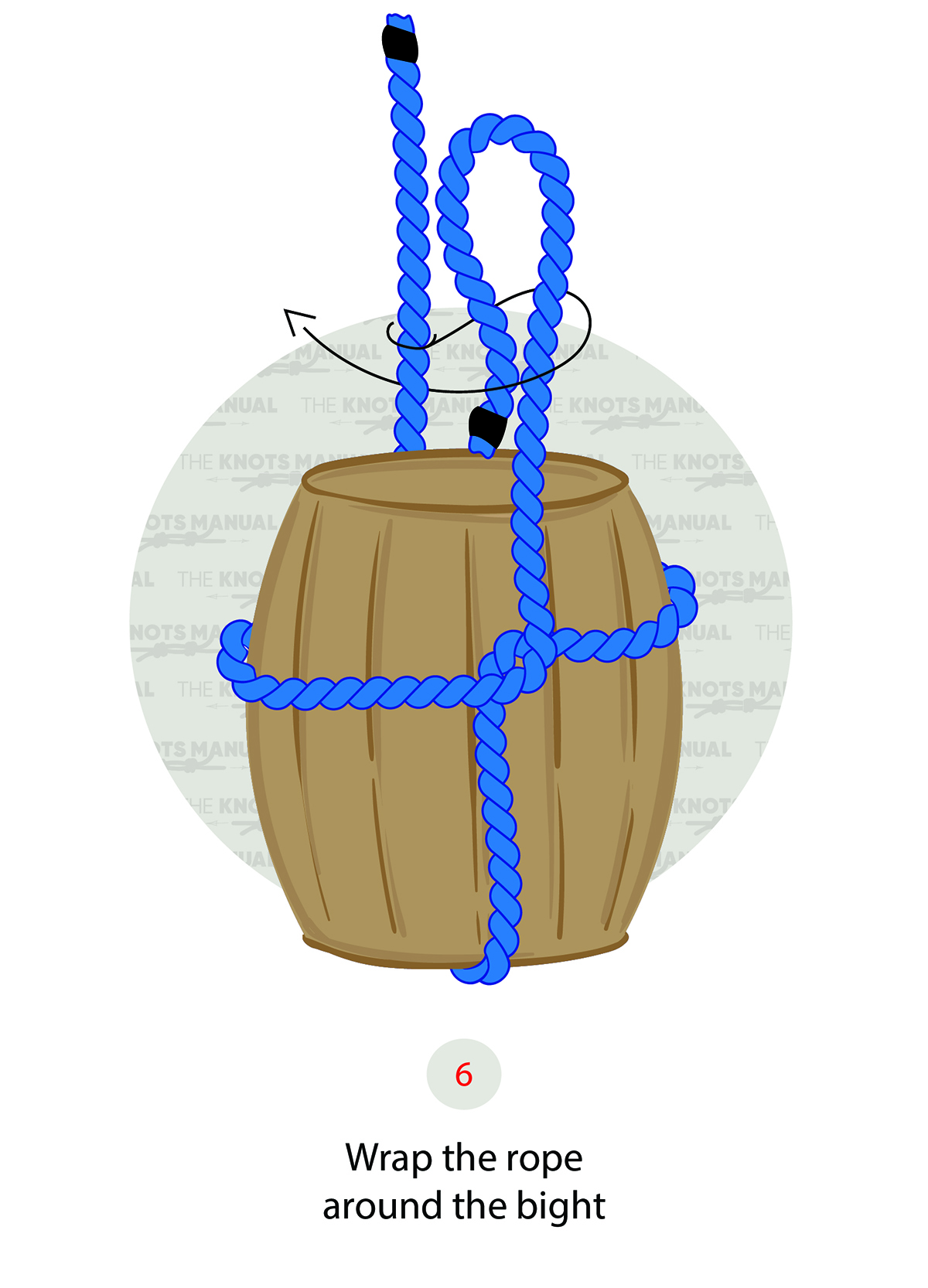
Pass the working end through the loop of the bight.
Step 7:
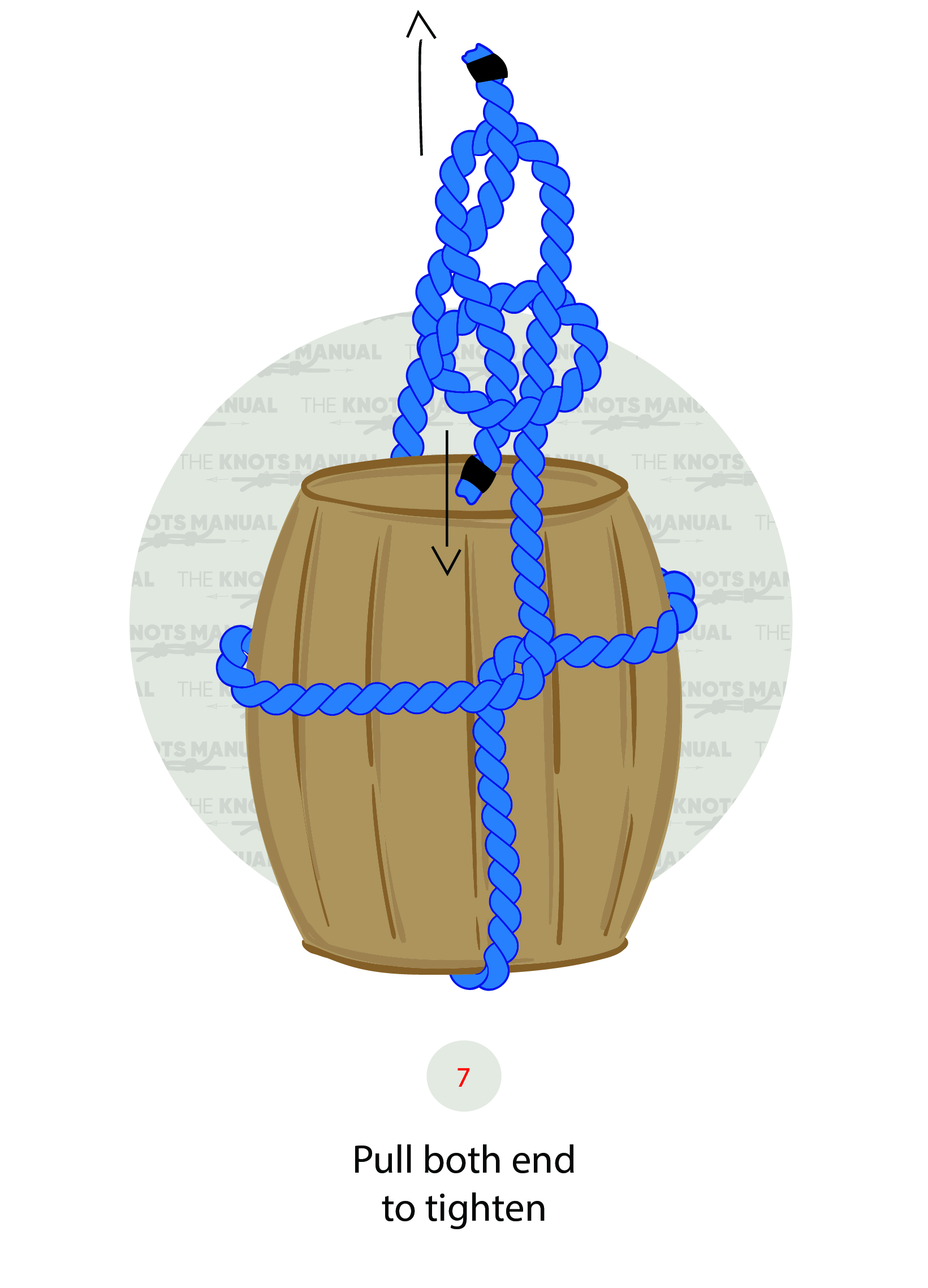
Pull the working and standing ends simultaneously to tighten the knot.
Step 8:
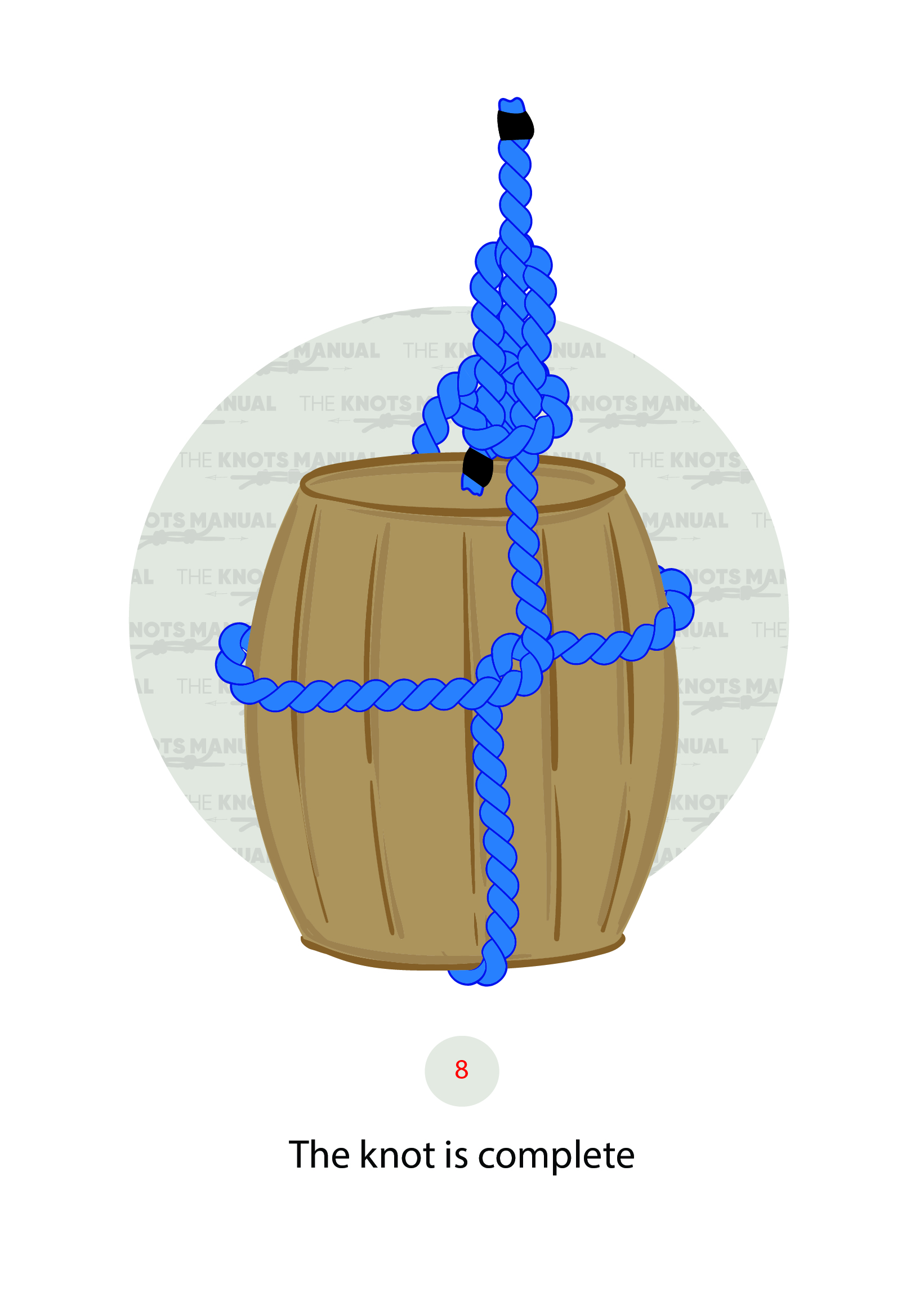
The knot is complete.
What Are The Uses Of The Barrel Hitch?
The most common use of the barrel hitch is to load cargo aboard ships and other large vessels. Using these knots when suspending buckets in other scenarios is also helpful.
Knots Similar To The Barrel Hitch
Barrel Sling: These knots are like the barrel hitch. Yet, they tie around a barrel lying horizontally. Barrel slings comprise a cow hitch, and they are sometimes called “bale slings.” Barrel slings tend to be more secure than barrel hitches. Yet, they can only be used when both sides of the barrel are closed.
Cow Hitch: These knots comprise a pair of hitches tied in opposite directions. They are also known as the “lark’s head.” These hitches are used for handling power cables in surface mines. They’re also common for “tatting,” a type of decorative knotted lace. Lastly, they’re common for making bracelets.
Girth Hitch: These knots comprise a webbing loop sling. The loop sling attaches itself to other items, like slings, harnesses, ropes, or straps. They are often used in climbing.
FAQs
Can You Use A Barrel Hitch With Animals?
Barrel hitches are often used on horses and other pack animals to aid them in carrying cargo. Usually, they are tied on pack horses — animals trained for carrying heavy loads. Yet, barrel hitches can also be used on horses with a saddle and rider.
